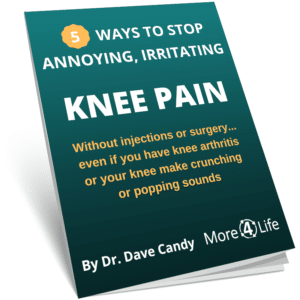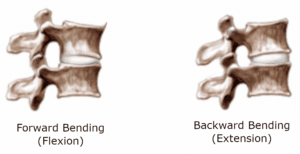Walking backward on a treadmill: Is it actually beneficial, or is it social media hype?
In this video, I'll explain the proposed benefits of walking backward on a treadmill. Plus, I'll explain why at this stage, it's premature to claim that it's more beneficial than walking forward.

Proposed Benefits of Backward Walking on a Treadmill
The proposed benefits of walking backward on a treadmill include:
- activating different muscle groups
- increasing knee extension or quadriceps strength
- burning more calories than forward walking
- relieving knee pain and knee arthritis
- relieving lower back pain
However, if you take a closer look at the research, strong evidence to support these claims is still lacking.
Different Muscle Activation Patterns When Walking Backwards On Treadmill
It's undeniable that backward walking activates muscles differently than forward walking.
So if you're just looking for some variety in your workout, backward walking could be one way to do that.
When walking backward on a treadmill, you use primarily your knee extensor muscles (quadriceps) to push off.
Backward Walking On Treadmill For Knee Arthritis
While some argue this is beneficial for knee pain, many people with knee pain don't actually have weak quads.
It's often the glutes that are weak.
Forwards walking on an incline treadmill utilizes the glutes to push off rather than the quads.
Research on Backward Walking For Knee Osteoarthritis
One study comparing standard treatment with added backward walking for people with knee osteoarthritis found that the backward walking group did better.
But when you look at what the standard treatment was, it didn't include forward walking.
Additionally, the backward walking in the study was performed over ground, which is a substantially different activity than walking backwards on a treadmill.
Backward Treadmill Walking For Weight Loss
Another claimed benefit is increased calorie expenditure, potentially aiding weight loss.
Oxygen consumption as measured in Metabolic Equivalents (METs) is higher during backward walking than forward walking at the same speed.
This means that you burn more calories per unit time when walking backward.
However, note that the walking tasks in the table above were measured on ground, not walking backward on a treadmill.
Additionally, if you look at the speed, they were measured at 3.5 miles per hour, which is a brisk walk.
For reference, I was walking on the treadmill at 0.5 miles per hour in the video above.
Furthermore, walking backer faster on a treadmill is actually easier. You just have to pick up your feet and let the belt move underneath of you at faster speeds.
When you walk at a slower speed on a a treadmill, it's almost as if you're pushing the treadmill belt away from you faster than it would go on it's own, which is how you get quadriceps activation.
And if you're walking backwards over ground, it's hard to find a place to walk backwards for 30, 45, or 60 minutes (unless you're doing it on a track) where you won't run into something or walk out in traffic.
Plus, walking backwards isn't really a functional task, because in real life, we walk forwards.
Also, keep in mind that your diet is the largest factor affecting weight loss more so than exercise.
For all of these reasons, I believe that walking backwards on a treadmill won't help you lose weight to any greater extent than forward walking.
Research On Backwards Walking For Weight Loss
One study suggests backward walking may have weight loss benefits.
However, this study had a flawed design, as the comparison group maintained their usual activities from the 4 weeks prior to the study.
They didn't add forward walking.
Therefore, the backward walking group got more overall activity than the control group. So it's quite possible that the backward walking group may have lost more weight due to increased activity level rather than specifically due to backwards walking.
Backward Walking For Chronic Lower Back Pain
What about backward walking for lower back pain?
One electromyographic study proposed that backward walking could be beneficial for people with lower back pain.
This study measured the extent to which certain muscles were activated during backwards walking vs. forwards walking.
The study found that the lumber extensor muscles were activated to a greater extent during backward walking than forwards walking.
However, this was a lab study, not a clinical trial. Therefore, we don't know if this finding actually improves pain or function in people with lower back pain.
For people with degenerative disc disease or spinal stenosis, increased activation of the lumbar extensors may actually cause more pain rather than relieve it.
Conversely, forward walking on an incline treadmill encourages a slight forward trunk lean (lumbar flexion) which opens up the spaces in your lower back.
Conclusion
Don't let this article make you think that backwards walking on a treadmill isn't good exercise or that you need to avoid it.
It does activate different muscle groups, and there may be certain people with knee pain who do benefit from it.
But there are other reports of people with knee pain who experience increased knee pain from walking backward on a treadmill.
The point of this article is that with all of the hype that backward walking on a treadmill has been getting on social media recently, it's probably more of a fad than a legitimate treatment.
There's not enough strong evidence (at least yet) to support that it's any better than forward walking for weight loss, knee pain, or back pain.
Rather than "trying" backwards walking for weeks or months on end to "see if it works", it's probably better to stick to tried and true methods that are known to help back or knee pain.
By getting help from an expert, you can relieve your back or knee pain faster and get back to the activities that you enjoy.
If you're in the St Louis area and you need help for back or knee pain, we'd be happy to help you at More 4 Life.
Just tap the button below to request an appointment with one of our specialist physical therapists.
Like this post? Here are a few others you may enjoy:
Is Walking Good For Bone On Bone Knee Pain?
Why Your Knee Buckles When Walking & How To Stop It From Giving Out
How Can I Walk Without Pain? Avoid These 3 Mistakes For Pain-Free Walking
How Much Walking Is Good For Arthritis? (Walk More With Less Pain)




